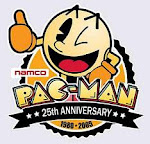 From the Cambridge Evening News, August 1982:
From the Cambridge Evening News, August 1982:
A Willingham businessman has hit the jackpot with his new concept in drumming.
Mr Mike Coxhead set up a company, MPC Electronics, based at his home in Willingham four months ago specifically to launch his idea, which is called "The Kit".
It is a small machine which electronically produces drum sounds to match those of a full-size drum kit. The drummer taps out the sound with his fingers on touch-sensitive pads giving a limitless range of rhythms.
Now Mr Coxhead and a partner, Mr Clive Button of Norwich, have captured orders worth £250,000 world-wide.
"The Kit" and its sister machines, "The Tymp", "The Clap" and "The Synkit" have gone into production at the Medco electronics plant in Ainsworth Street, Cambridge.
Mr Coxhead said the firm had had to take on ten more workers to cope with the orders and another twenty were expected to be employed by Christmas.
When he unveiled the prototype in April he told the "News" he was quietly confident it would sell abroad.
He is delighted with the response gained through the New York distributors. "I could end up a very wealthy man," he said.
The production model has been redesigned into a smoother looking unit. Mr Coxhead said it "went down big" in the USA where 2,000 were ordered before the product was in the shops.
"They have got the money over there and they are into synthesised music and the electronic idiom," he said...
Japan has also proved to be a viable market. "It's good to beat the Japanese at their own game. They are in the shops over there and selling well."
 Merry Christmas and all the very best for 2009, folks! Here's a 1985 magazine ad featuring the lovely Su Pollard (Peggy from Hi-De-Hi!) and an assortment of toys and games which delighted youngsters at Christmas that year. A Tomy Lights Alive? Care Bears? Trivial Pursuit? My Little Pony? The choice was yours!
Merry Christmas and all the very best for 2009, folks! Here's a 1985 magazine ad featuring the lovely Su Pollard (Peggy from Hi-De-Hi!) and an assortment of toys and games which delighted youngsters at Christmas that year. A Tomy Lights Alive? Care Bears? Trivial Pursuit? My Little Pony? The choice was yours!

































